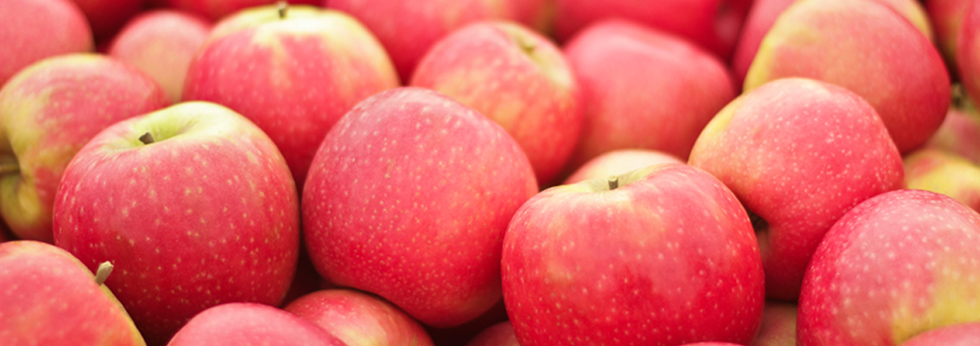You will see you’ve got the first of our apples in your CSA box this week and so what better time than the present to introduce you to our orchard…
Before Fifth Crow was even an idea John recruited Mike to help select and plant apple trees that John intended to grow up in Chehalis, WA on his grandpa’s farmland. To select their varieties they went to the apple master, Orin Martin, who both John and Mike had studied under in the CASFS farm apprenticeship in Santa Cruz. Even though the trees were selected to grow in WA they had all be grown in Santa Cruz. John and Mike hand grafted all the trees themselves onto semi-dwarfing root stock and grew them down south at the Esalen Institute where John had been managing a farm. The trees spent a winter there before John, Mike, & Teresa met Gene & Donna and decided to lease farmland from them here in Pescadero and moved the trees north.
 The trees varieties were selected to cover a spectrum of preferences. They were looking for both early and late crops so they could extend the harvest season from summer until fall and they chose great tasting varieties over commercially viable ones; from a business prospective they knew that at farmers markets their customers would respond to uniqueness and flavor over your typical grocery store varieties. Fifth Crow has an unusual collection of apples that you’ll never see in a grocery store. Many of our apple trees are rare, heirloom and heritage varieties.
The trees varieties were selected to cover a spectrum of preferences. They were looking for both early and late crops so they could extend the harvest season from summer until fall and they chose great tasting varieties over commercially viable ones; from a business prospective they knew that at farmers markets their customers would respond to uniqueness and flavor over your typical grocery store varieties. Fifth Crow has an unusual collection of apples that you’ll never see in a grocery store. Many of our apple trees are rare, heirloom and heritage varieties.
One reason for grafting on semi-dwarfing root stock was to create a pedestrian orchard or in other words an orchard where you can pick the fruit standing on the ground and without the use of ladders. Another reason is because you can fit more trees in per acre. However, that means the individual trees will have a lower yield and smaller quantities will go to market at a time but ideally there would be little waste of fruit.
 How do we take care of the trees? We do both a summer and a winter pruning, we fertilize twice per year, we weed and mulch around the trees, we irrigate throughout the summer months, we don’t use any sprays but we do use coddling moth traps which put off pheromones to confuse the moths, and we use Tanglefoot once a year which is a sticky compound that is applied around the lower foot of the tree trunk to create a barrier for ants (and other small critters) that will otherwise use the tree to farm aphids. Our biggest pest pressure are the birds. They eat the ripening fruit right on the tree before we can harvest the apples. What can you do?
How do we take care of the trees? We do both a summer and a winter pruning, we fertilize twice per year, we weed and mulch around the trees, we irrigate throughout the summer months, we don’t use any sprays but we do use coddling moth traps which put off pheromones to confuse the moths, and we use Tanglefoot once a year which is a sticky compound that is applied around the lower foot of the tree trunk to create a barrier for ants (and other small critters) that will otherwise use the tree to farm aphids. Our biggest pest pressure are the birds. They eat the ripening fruit right on the tree before we can harvest the apples. What can you do?
The first variety to ripen is called Pristine and that is what you’ll find in a brown bag in your box. The Pristine is a beautiful, smooth, bright yellow and orange-blushed apple. It has thin skin and slightly breaking flesh that is crisp for a summer apple. It is moderately acidic, yet sugary sweet and very juicy. It is a fairly good keeper. It is round in shape and medium to small in size. It is used for desserts like pie.
The crop begins to produce in mid-late July and ends in early August. Pristine is a relatively adaptable tree. It throws lots of short twiggy lateral branches so the trees can be grown close together, as close as 3 to 5 feet apart. It requires multiple pickings as it has a long ripening period.
Enjoy your apples!!


